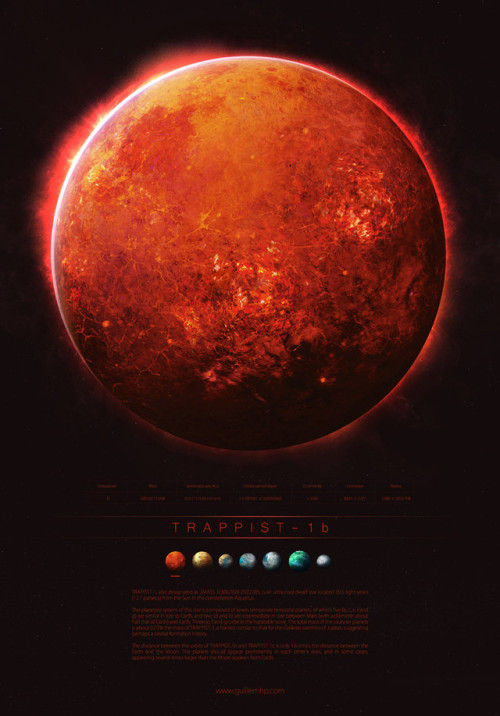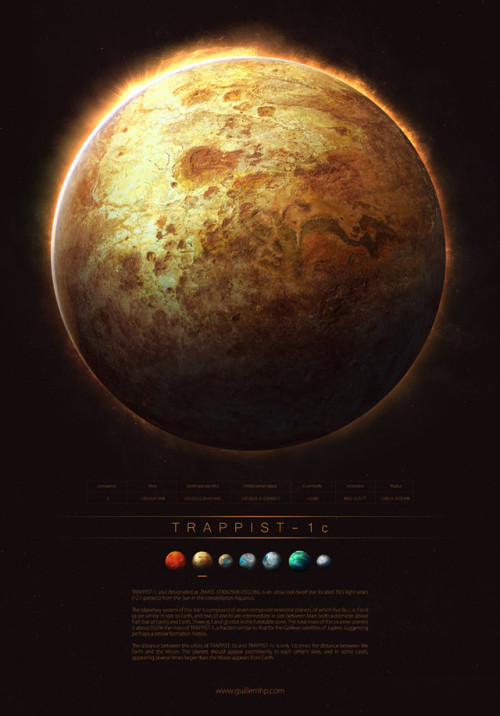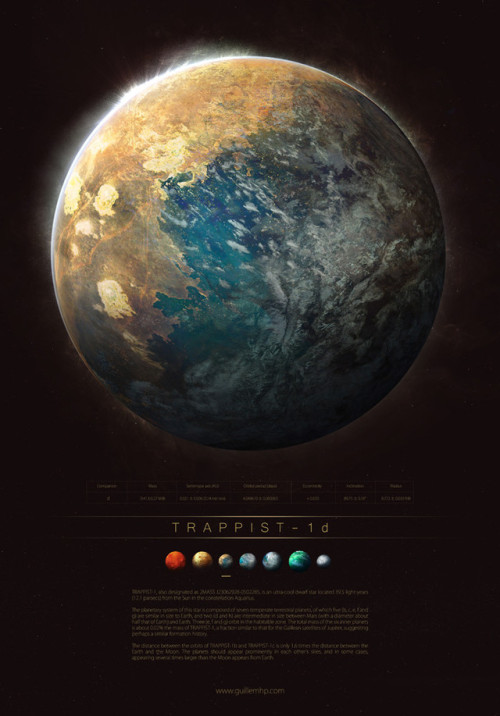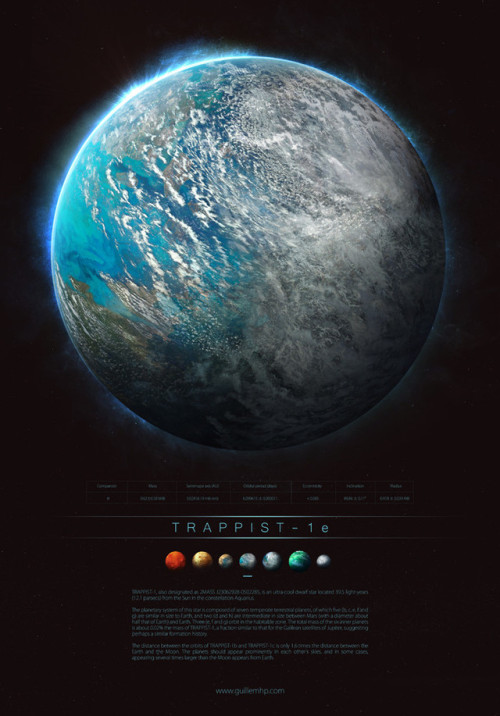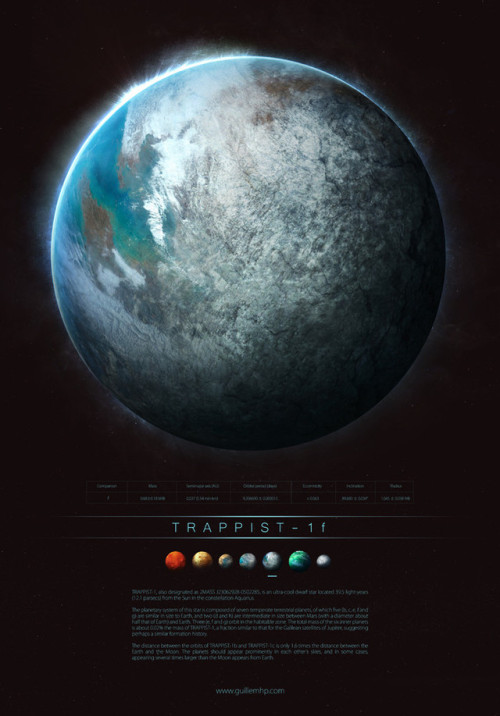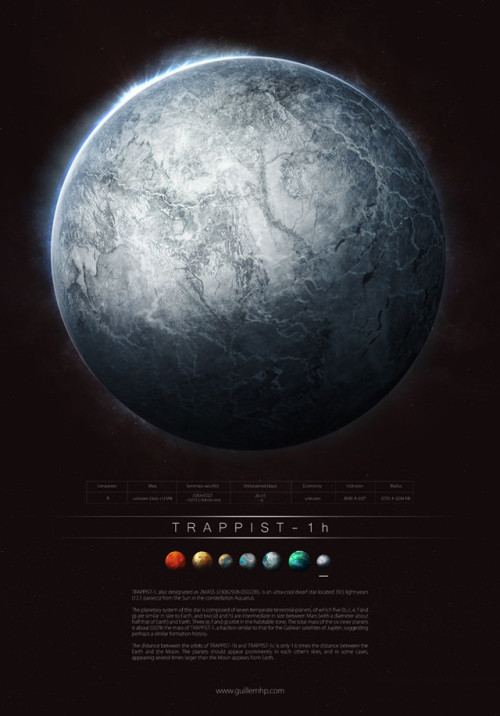Picture Of The Day - January 24, 2019

Picture of the Day - January 24, 2019
Desert world and it's large moon.
More Posts from Sharkspaceengine and Others
Cold Blue World

Picture of the Day 2 - October 19, 2019
Large hazy blue world rising about an asteroid moon.

Picture of the day 2 - January 10, 2019
Warm gas giant surrounded by a rainbow-colored ring system.
Space Engine System ID: RS 8550-1391-7-1315996-265 4 to visit the planet in space engine.
Space Engine on Pillowfort Coming Soon
Just to let all of my followers know. I have received by Pillowfort login and will be playing around with setting up a Space Engine blog on there.
http://www.pillowfort.io
I will still be keeping this blog as my primary blog, and my secondary blog rabbits and shark will also be staying here.
For the time being, I am just trying Pillowfort out, with the anticipation that Tumblr may eventually go under, but until then, I am staying on here, so please don’t worry about me leaving.
My Pillowfort link is below:
Sharkspaceengine
For anyone who doesn't know what Pillowfort is, it is beta blogging site that is possibly going to be an alternative to Tumblr. The site is currently still in beta and charges $5 for a key, but that is temporary, and once the main site is up and running there will be no charge.

Horns by Michal Kváč https://ift.tt/2zvtNZ1
Hey Tumblr!
I have started a new blog to share the joys of fishing and kayaking! This post is all about the best cheap kayaks for under 200 dollars. I hope some of you who are interested can find more about kayaking and fishing! Either way, it’s worth a read if you have a minute. It might just save you a few hundred dollars down the road.
Read my blog at Get Fishing Equipment

Picture of the day - November 14, 2018
Twin suns begin rising over an airless Mercury-Like planet.

Picture of the Day - February 5, 2019 - (Very late post)
I've decided to travel back home in Space Engine.
Earth and the Moon.





Pictures of the Day December 1, 2018
Insight System - Insight B-II
The second planet orbiting Insight B. This world is a more extreme version of Venus that is choked in a thick carbon dioxide atmosphere 427 times thicker than Earths. Unlike Venus, the atmosphere is humid, water vapor comprises 6.45% of the planet’s atmosphere, further amplifying the greenhouse effect of the atmosphere.
Insight B-II is a super earth with approximately 5.28 Earth’s masses, and a radius of 1.39 Earth Radii. The planet is quite dense and has a surface gravity of 2.7 g. Such a high surface gravity flattens the ground and results in only small elevation changes across the entire surface of the planet. The planet is tidally locked to the sun and orbiting at a distance of 0.09 AU. Surface temperatures average 1,182 F. Most of the surface consists of broad plains covered in shallow sand dunes.
High Resolution Pictures
Insight B-II
Approaching the atmosphere
Storms
Daytime sky
Twilight sky
Solar System 10 Things: Spitzer Space Telescope

Our Spitzer Space Telescope is celebrating 15 years since its launch on August 25, 2003. This remarkable spacecraft has made discoveries its designers never even imagined, including some of the seven Earth-size planets of TRAPPIST-1. Here are some key facts about Spitzer:
1. Spitzer is one of our Great Observatories.

Our Great Observatory Program aimed to explore the universe with four large space telescopes, each specialized in viewing the universe in different wavelengths of light. The other Great Observatories are our Hubble Space Telescope, Chandra X-Ray Observatory, and Compton Gamma-Ray Observatory. By combining data from different kinds of telescopes, scientists can paint a fuller picture of our universe.
2. Spitzer operates in infrared light.

Infrared wavelengths of light, which primarily come from heat radiation, are too long to be seen with human eyes, but are important for exploring space — especially when it comes to getting information about something extremely far away. From turbulent clouds where stars are born to small asteroids close to Earth’s orbit, a wide range of phenomena can be studied in infrared light. Objects too faint or distant for optical telescopes to detect, hidden by dense clouds of space dust, can often be seen with Spitzer. In this way, Spitzer acts as an extension of human vision to explore the universe, near and far.
What’s more, Spitzer doesn’t have to contend with Earth’s atmosphere, daily temperature variations or day-night cycles, unlike ground-based telescopes. With a mirror less than 1 meter in diameter, Spitzer in space is more sensitive than even a 10-meter-diameter telescope on Earth.
3. Spitzer was the first spacecraft to fly in an Earth-trailing orbit.

Rather than circling Earth, as Hubble does, Spitzer orbits the Sun on almost the same path as Earth. But Spitzer moves slower than Earth, so the spacecraft drifts farther away from our planet each year.
This “Earth-trailing orbit” has many advantages. Being farther from Earth than a satellite, it receives less heat from our planet and enjoys a naturally cooler environment. Spitzer also benefits from a wider view of the sky by orbiting the Sun. While its field of view changes throughout the year, at any given time it can see about one-third of the sky. Our Kepler space telescope, famous for finding thousands of exoplanets – planets outside our solar system – also settled in an Earth-trailing orbit six years after Spitzer.
4. Spitzer began in a “cold mission.”

Spitzer has far outlived its initial requirement of 2.5 years. The Spitzer team calls the first 5.5 years “the cold mission” because the spacecraft’s instruments were deliberately cooled down during that time. Liquid helium coolant kept Spitzer’s instruments just a few degrees above absolute zero (which is minus 459 degrees Fahrenheit, or minus 273 degrees Celsius) in this first part of the mission.
5. The “warm mission” was still pretty cold.

Spitzer entered what was called the “warm mission” when the 360 liters of liquid helium coolant that was chilling its instruments ran out in May 2009.
At the “warm” temperature of minus 405 Fahrenheit, two of Spitzer’s instruments – the Infrared Spectrograph (IRS) and Multiband Imaging Photometer (MIPS) – stopped working. But two of the four detector arrays in the Infrared Array Camera (IRAC) persisted. These “channels” of the camera have driven Spitzer’s explorations since then.
6. Spitzer wasn’t designed to study exoplanets, but made huge strides in this area.

Exoplanet science was in its infancy in 2003 when Spitzer launched, so the mission’s first scientists and engineers had no idea it could observe planets beyond our solar system. But the telescope’s accurate star-targeting system and the ability to control unwanted changes in temperature have made it a useful tool for studying exoplanets. During the Spitzer mission, engineers have learned how to control the spacecraft’s pointing more precisely to find and characterize exoplanets, too.
Using what’s called the “transit method,” Spitzer can stare at a star and detect periodic dips in brightness that happen when a planet crosses a star’s face. In one of its most remarkable achievements, Spitzer discovered three of the TRAPPIST-1 planets and confirmed that the system has seven Earth-sized planets orbiting an ultra-cool dwarf star. Spitzer data also helped scientists determine that all seven planets are rocky, and made these the best-understood exoplanets to date.
Spitzer can also use a technique called microlensing to find planets closer to the center of our galaxy. When a star passes in front of another star, the gravity of the first star can act as a lens, making the light from the more distant star appear brighter. Scientists are using microlensing to look for a blip in that brightening, which could mean that the foreground star has a planet orbiting it. Microlensing could not have been done early in the mission when Spitzer was closer to Earth, but now that the spacecraft is farther away, it has a better chance of measuring these events.
7. Spitzer is a window into the distant past.

The spacecraft has observed and helped discover some of the most distant objects in the universe, helping scientists understand where we came from. Originally, Spitzer’s camera designers had hoped the spacecraft would detect galaxies about 12 billion light-years away. In fact, Spitzer has surpassed that, and can see even farther back in time – almost to the beginning of the universe. In collaboration with Hubble, Spitzer helped characterize the galaxy GN-z11 about 13.4 billion light-years away, whose light has been traveling since 400 million years after the big bang. It is the farthest galaxy known.
8. Spitzer discovered Saturn’s largest ring.

Everyone knows Saturn has distinctive rings, but did you know its largest ring was only discovered in 2009, thanks to Spitzer? Because this outer ring doesn’t reflect much visible light, Earth-based telescopes would have a hard time seeing it. But Spitzer saw the infrared glow from the cool dust in the ring. It begins 3.7 million miles (6 million kilometers) from Saturn and extends about 7.4 million miles (12 million kilometers) beyond that.
9. The “Beyond Phase” pushes Spitzer to new limits.

In 2016, Spitzer entered its “Beyond phase,” with a name reflecting how the spacecraft operates beyond its original scope.
As Spitzer floats away from Earth, its increasing distance presents communication challenges. Engineers must point Spitzer’s antenna at higher angles toward the Sun in order to talk to our planet, which exposes the spacecraft to more heat. At the same time, the spacecraft’s solar panels receive less sunlight because they point away from the Sun, putting more stress on the battery.
The team decided to override some autonomous safety systems so Spitzer could continue to operate in this riskier mode. But so far, the Beyond phase is going smoothly.
10. Spitzer paves the way for future infrared telescopes.

Spitzer has identified areas of further study for our upcoming James Webb Space Telescope, planned to launch in 2021. Webb will also explore the universe in infrared light, picking up where Spitzer eventually will leave off. With its enhanced ability to probe planetary atmospheres, Webb may reveal striking new details about exoplanets that Spitzer found. Distant galaxies unveiled by Spitzer together with other telescopes will also be observed in further detail by Webb. The space telescope we are planning after that, WFIRST, will also investigate long-standing mysteries by looking at infrared light. Scientists planning studies with future infrared telescopes will naturally build upon the pioneering legacy of Spitzer.
Read the web version of this week’s “Solar System: 10 Things to Know” article HERE.
Make sure to follow us on Tumblr for your regular dose of space: http://nasa.tumblr.com.

Artists Collage of a Gas Giant planet viewed from a Earth-like planet. Scientists estimate there are billions of planets like ours in the Milky Way Galaxy alone.
clothing
-
 sweet-verses liked this · 6 years ago
sweet-verses liked this · 6 years ago -
 kawasuragi liked this · 6 years ago
kawasuragi liked this · 6 years ago -
 harmonicgamingangel22blog liked this · 6 years ago
harmonicgamingangel22blog liked this · 6 years ago -
 sharkspaceengine reblogged this · 6 years ago
sharkspaceengine reblogged this · 6 years ago
My Space Engine Adventures, also any space related topic or news. www.spaceengine.org to download space engine. The game is free by the way. Please feel free to ask me anything, provide suggestions on systems to visit or post any space related topic.Check out my other blog https://bunsandsharks.tumblr.com for rabbit and shark blog.
294 posts

